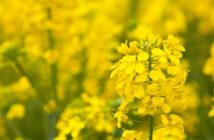Pre-emergence herbicides will need to feature more prominently in sugar beet weed control programmes in order to mitigate the risks from poorer control later in the season, leading agronomy firm Hutchinsons says.
While post-emergence chemistry has given good results for many growers in recent years, the most effective desmedipham-based products are now in their last season of use and alternatives are generally less effective against larger weeds, says root crop technical manager Darryl Shailes.
“Desmedipham-based products gave a margin for error that will be less achievable from remaining post-em chemistry.
“While the pre-emergence herbicide in sugar beet isn’t as crucial as the pre-em in cereals for black-grass control, BBRO research shows there are very few years when it doesn’t contribute to overall weed control and it’s an important way of easing the passage for post-emergence sprays.”
Furthermore, Mr Shailes says there is ongoing uncertainty about how Coronavirus will disrupt activities in coming months if growers, agronomists or farm staff have to self-isolate, so it is sensible to keep crops as clean and weed-free as possible from the outset, especially given sugar beet’s susceptibility to weed competition.
Tall, shading weeds, such as fat hen, volunteer oilseed rape, redshank and weed beet, can be particularly damaging to yield potential, so their removal is critical, he notes. For example, research has shown that just one oilseed rape plant per m2 can cause a sugar loss of 500 kg/ha. Brooms Barn trials several years ago also showed a 10t/ha drop in yield from a fat hen population of 2.8 plants/m2, while doubling the fat hen number led to twice the yield loss compared with the weed-free yield.
Pre-em choices
Chloridazon has been a favoured, inexpensive pre-emergence option for many years, but it is in its last season of use, and any remaining farm stocks must be used by 30 June.
The main alternatives are products based on ethofumesate, metamitron, quinmerac and dimethenamid-p in various combinations, Mr Shailes says.
Ethofumesate is primarily for grassweeds and is essential on fields with a challenging black-grass issue. It offers some post-emergence usage, but he reminds growers that only 1000g of active can be applied per season.
“Metamitron will be the mainstay as it brings good early control of knotgrass and fat hen. Other chemistry should be mixed and matched to best effect according to label requirements and weed spectrum.”
Lenacil with chloridazon used to be an effective combination when applied at the correct dosage, but a label change means Lenacil can now only be used post-emergence from BBCH10, or fully expanded cotyledons, he notes.
Maximise efficacy
Several factors influence the efficacy of pre-emergence sprays, and chief among them is soil moisture.
Despite the wet winter, conditions in many beet-growing areas are now quite dry following a recent spell of fine weather, which could hinder pre-em efficacy if it persists, and will be compounded on cloddy seedbeds, Mr Shailes notes.
“Ideally you need a decent clod-free seedbed and should wait for a bit of moisture before applying the pre-em, although generally it should go on within 48 hours of drilling.”
Five factors influencing pre-em efficacy:
- Soil moisture – residual pre-em chemistry needs soil moisture to work properly, so avoid applying to very dry seedbeds. But, timely drilling remains the priority, so it is not worth delaying drilling on account of pre-em conditions
- Timing – apply within 24-48 hours of drilling
- Temperature – avoid applying pre-ems in hot conditions and bright sunlight. Wait until evening/night or early morning when conditions are cooler and there may be more moisture form overnight dews
- Seedbed quality – avoid cloddy seedbeds, which can cause a spray “shadow” of untreated areas allowing weeds to emerge
- Application – use alternating front & back nozzles, limit forward speed to 12 kph max, lower boom height to 50 cm, apply products in 300 L/ha water. Use Syngenta’s Defy nozzle advice as a guideline.




